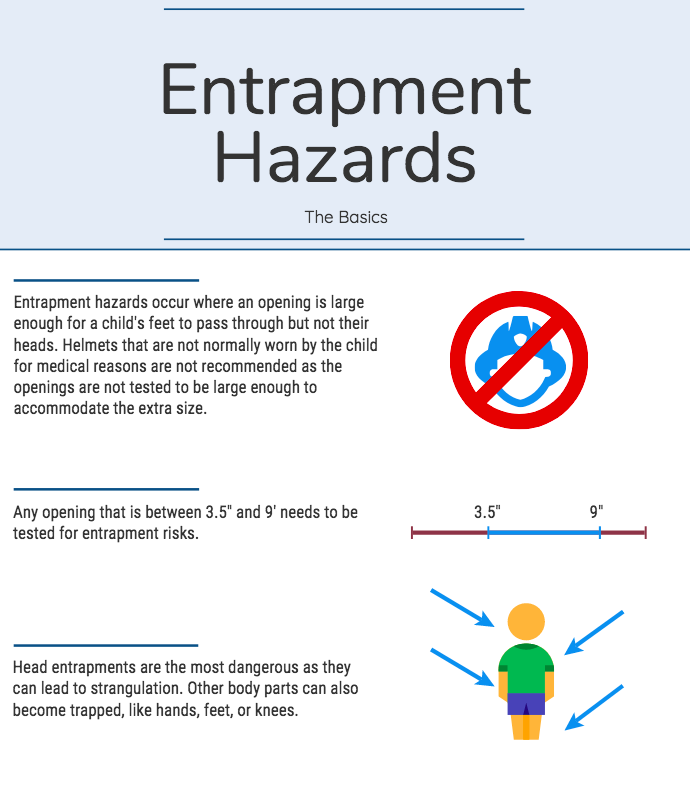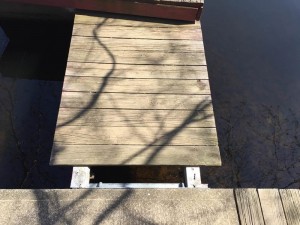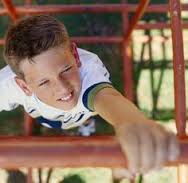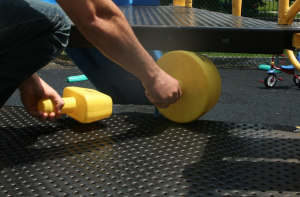Entrapment Hazard
Entrapments can be extremely dangerous and scary. If a child’s head becomes caught in an opening on a playground it can lead to strangulation. Strangulation due to a head or neck entrapment after a feet-first entry into an opening is the No. 3 cause of death on playgrounds. Openings can be rigid or non-rigid and partially or totally bounded. You must test openings that measure between 3.5″ – 9″ with ASTM head and torso probes to ensure that the opening admits both the feet and the head.
Children often trip and fall as they are still developing different motor and balance skills. Their feet can easily slip into an opening. If they fall through and the opening isn’t big enough, their head will become stuck. If you find that the foot probe passes through an opening but that the opening will not admit the head probe, then an entrapment hazard exists. ASTM 6.1 – 6.1.4.
Common Openings on Playground Equipment:
- Decks
- Rails
- Steps
- Platforms
- Slats on Bridges
If your child is a climber or very adventurous, a playground with entrapment hazards can cause you unnecessary worry. Ensure that your child can play as freely as they would like, but make sure their head will fit through the same opening as their feet and body. Some children’s heads may get stuck and they may not know how to get it out. There’s also the risk that their neck can get caught in an opening that forms an angle of less than 55 degrees.
This hazard is a priority 1 safety concern, you should eradicate them immediately in order to avoid injury or suffocation. Professional playground inspectors know how to spot these hazards, test for them, and inform you how to best fix the issue.

Less Serious Entrapment Hazards
The main concern with entrapment is strangulation from the head or neck getting stuck, but an inspector should be concerned with gaps or openings that can cause fingers, hands, ankles, or knees to get stuck as well. Many parents want children to wear helmets as a safety measure, but this can actually cause more harm. Gaps must be a certain size so an average head can pass through it, but a helmet may block the head and cause injury.
Gaps that don’t allow knees to pass through are not life-threatening but still something to be wary of. As equipment ages and is used more and more, hazards can appear from equipment stretching out or wearing down. Watch out for places where your children’s fingers can get pinched.
Should my child wear a helmet on the playground?
NO! Helmets can get caught in gaps that are otherwise considered safe for a child’s head to pass through. They make a child’s head bigger and thus may allow them to get stuck and suffer from suffocation or strangulation. Helmets cause more harm than good on playgrounds. Make sure your child isn’t wearing clothing that can get snagged on anything and supervise them. They should be safe on an up to code playground!



